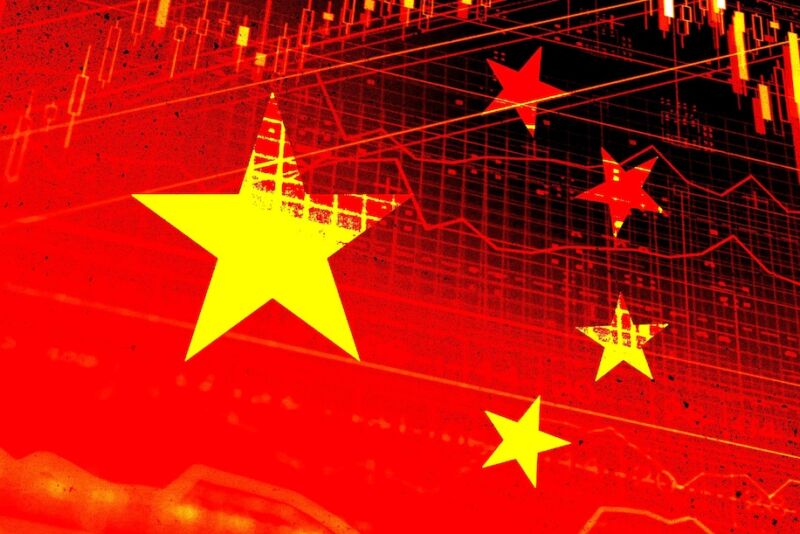
Is China (a) an economic juggernaut, rapidly overtaking the United States in the technologies of tomorrow? Or is it (b) an ailing giant, doomed by demography, failing real estate developers and counterproductive government diktat?
Trick question: China is both. But the country’s weaknesses increasingly dominate its strengths.
Start with the evidence for juggernaut China. Back in 2000, the country’s spending on research and development, government plus private, was about one-ninth that of the United States, according to Organization for Economic and Cooperation and Development statistics. Fast-forward to 2020 and it was 85 percent. Further, by concentrating its resources, China has achieved global leadership in strategic areas. A worldwide ranking of universities, ordered according to how many top-cited papers in math and computing were generated from 2015 to 2018, shows Chinese institutions holding the top seven slots.
Excellence in research has come with dominance in key commercial technologies. Chinese companies lead the world in drones, mobile payments and 5G networking equipment. Chinese consumers’ habit of conducting every aspect of life via smartphones has generated data with an extraordinary density, and cheap Chinese labor allows for the data’s laborious tagging. Combined with double-fisted government subsidies, these two factors give China a head start in the race to train artificial intelligence systems.
China’s venture capitalists are formidable. They have learned the art of disruption from Silicon Valley’s experts: The top Sand Hill Road outfit is Sequoia Capital; the top China outfit is Sequoia China. American and American-trained venture capitalists have launched several other firms in the mainland. Sinovation Ventures, a leading backer of AI, is led by Kai-Fu Lee, an alumnus of Google, Microsoft, Apple and the Carnegie Mellon PhD program.
All of which recently led Eric Schmidt, the former chief executive of Google, to warn that the United States might lose the tech race against China. Since that could include military technology, losing could pose an existential threat. Yet China’s leaders, for their part, face even more profound challenges.
Economic growth in China is projected to come in at just over 3 percent this year. That is much lower than the official target of 5.5 percent; it is positively humiliating relative to China’s performance of a decade ago, when annual growth was around 8 percent. Boosters will ascribe this slowdown to idiosyncratic snags. But the snags collectively point to the big picture. An authoritarian system is reaching its limits.
The first snag is covid-19. China has made a prideful political decision not to import foreign vaccines, so it imposes draconian lockdowns at the first signs of an outbreak. Shanghai, Shenzhen and dozens of other cities have been subjected to economically ruinous curfews that have fouled up global supply chains (and imposed food shortages and other hardships on millions). In the western border town of Ruili, residents were barred from leaving their homes for 119 days between March 2021 and April 2022, Bloomberg Businessweek recently reported.
The second snag is real estate. Again, China has made a political decision not to encourage private consumption, viewing it as irrelevant to the Communist Party’s quest for national greatness. The result is statist contortions that promote unhealthy growth.
In the first decade of this century, China manipulated its exchange rate. This boosted exports, but it also led to an unsustainable trade surplus, the recycling of the receipts into vast piles of U.S. financial instruments and, ultimately, to a queasy feeling of dependence when Wall Street blew up in 2008.
The Communist Party’s next trick was to order banks and local governments to fuel a construction boom. Again, this boosted growth, but it replaced unsustainable foreign-bond buying with unsustainable domestic debt. Sure enough, the country’s largest property developer has defaulted. Buyers of unbuilt apartments are furious. A mortgage boycott has spread to more than 100 cities. Home prices have fallen for 12 straight months. Since real estate drives more than a quarter of the economy, the collapse of the sector threatens a wider slump.
The third snag casts a cloud over China’s strength in tech. For political reasons, again, China cannot tolerate tech titans who aspire to become Elon Musk-style influencers, who list their companies on foreign stock exchanges, or who found companies that help Chinese students apply for colleges abroad. So it has cracked down on the lot of them. This won’t encourage the next generation of technologists to start companies in China.
And then there is demography. In 1979, in yet another fit of statist hubris, China’s leaders imposed a harsh one-child policy, resulting in sex-selective abortions, a gender imbalance, and a fertility rate that cratered even faster than it would have if China had followed the standard pattern of a developing country. Far too late, the government recognized the fuse it had lit, eventually moving to a two-child policy in 2016. Last year, in a panic, the government announced a three-child policy along with programs to encourage childbearing. Fertility shows no sign of picking up.
None of this is good news — for China or the rest of the world. Russia has recently shown how a declining power can be more dangerous than a rising one, and the combination of scientific might and economic malfunction is a scary cocktail. There is not much the West can do to stop China from being China. But it can at least prepare.
Sebastian Mallaby is the Paul A. Volcker senior fellow for international economics at the Council on Foreign Relations and a contributing columnist for The Washington Post. He is the author, most recently, of "The Power Law: Venture Capital and the Making of the New Future,” published in February 2022.
